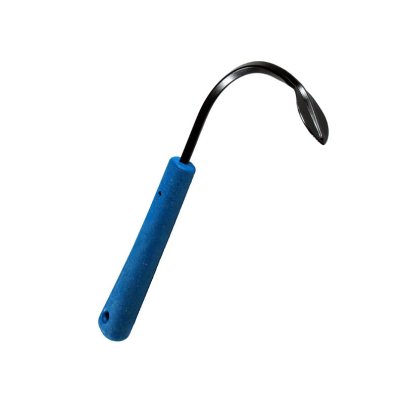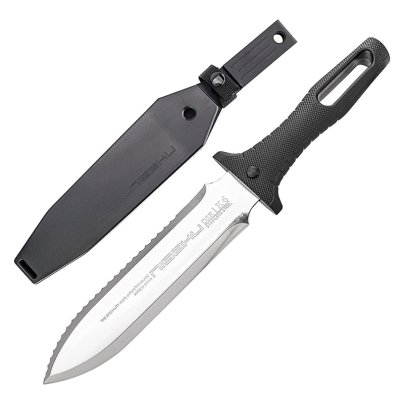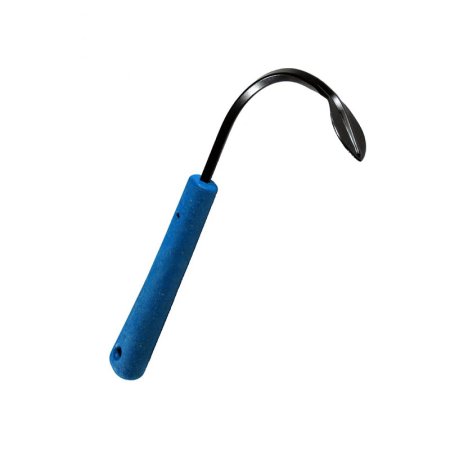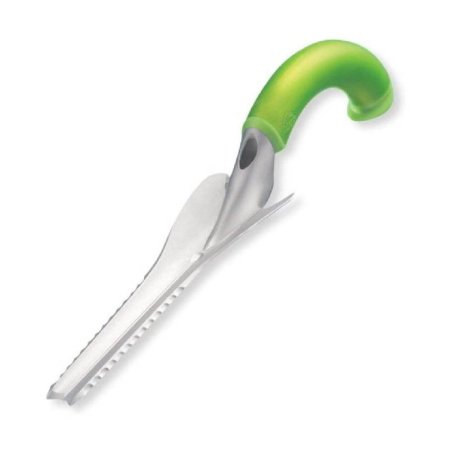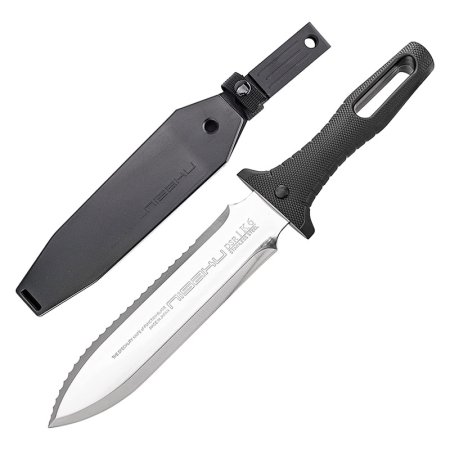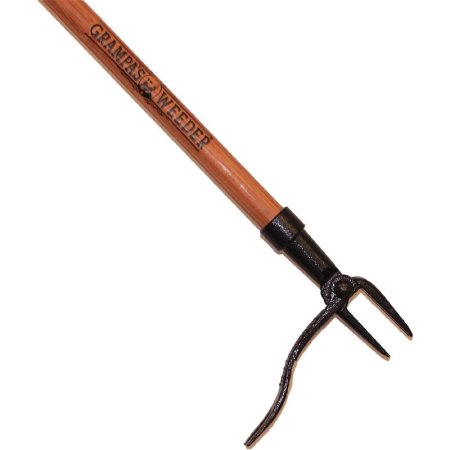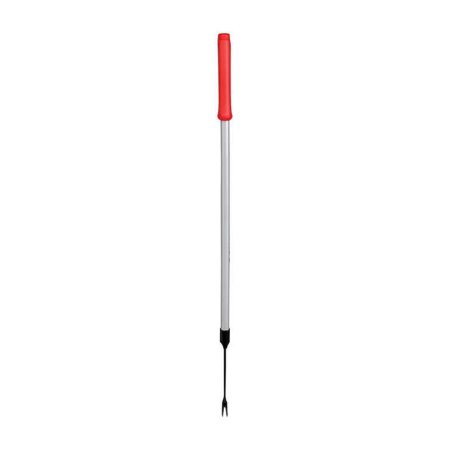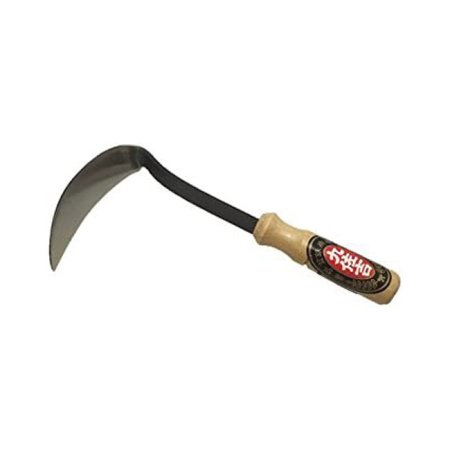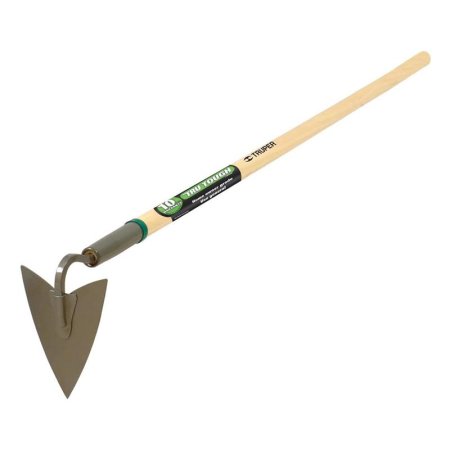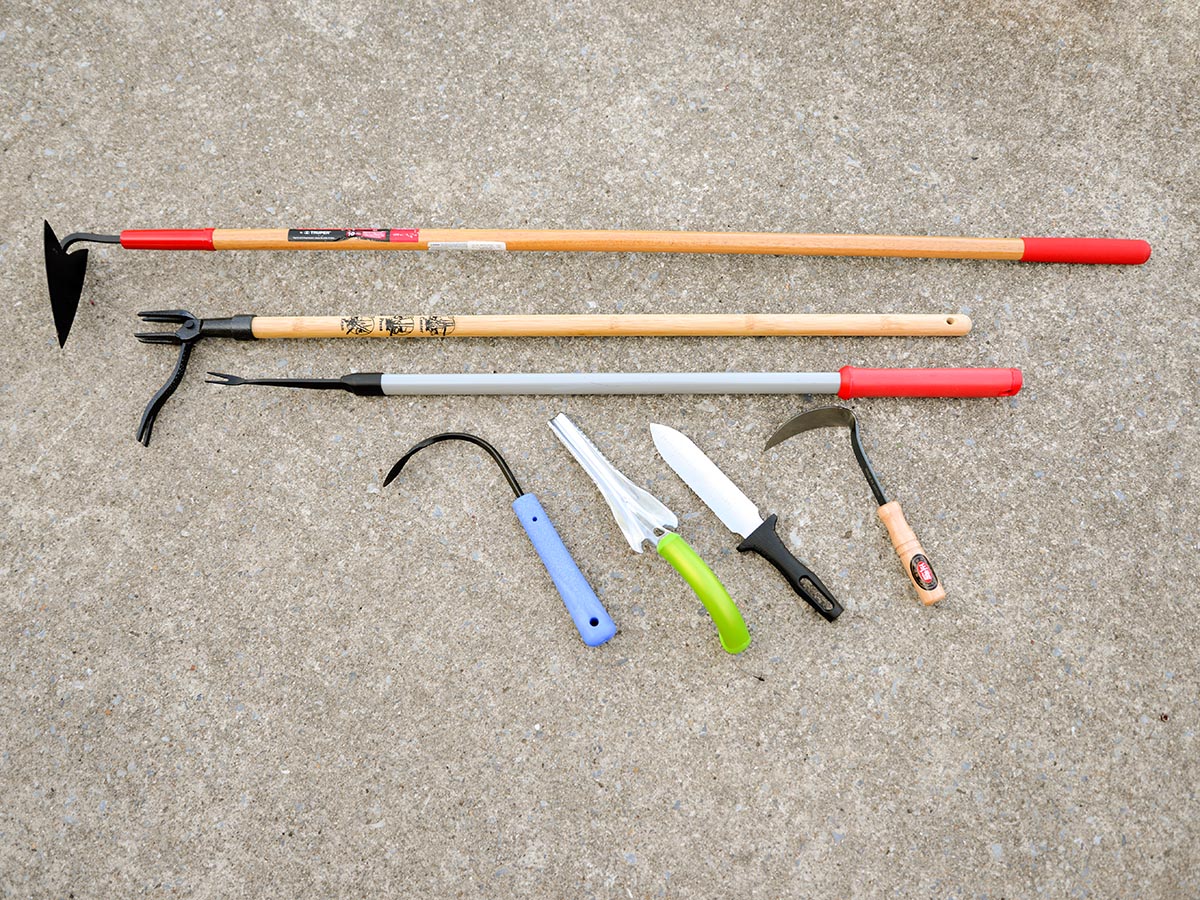
We may earn revenue from the products available on this page and participate in affiliate programs. Learn More ›
Though herbicides control weeds, these chemicals can pose serious health risks to humans and wildlife. Manual weeding, on the other hand, gets the job done without harm to people, pets, or the environment. With a well-made weeding tool and some vigilance, banishing these pesky plants can be fairly simple.
Weeds proliferate in your garden seemingly overnight, and it’s easiest to remove them when they’re young. Some weeds, such as dandelions, develop a single taproot that grows deeper into the soil as the plant matures. The longer the taproot, the more difficult it becomes to eradicate. Though some weeds release without a fight, others will have gardeners wondering whether they need a jackhammer to dislodge them. That said, timing and soil conditions are key to weed removal: After a rainfall, soil is softer and more willing to release roots.
With a proliferation of weed-control tools available, choosing the right one for the task at hand may feel like a shot in the dark. To help, we searched out and tested tools that work best for a variety of circumstances. Our favorite was the Original Weeder from CobraHead, thanks to its versatile uses and durable tempered steel head. Shoppers looking for the best weeding tool will want to check out our shopping considerations and product reviews ahead.
- BEST OVERALL: CobraHead Original Weeder & Cultivator Garden Tool
- BEST BANG FOR THE BUCK: Radius Garden Ergonomic Weeder
- BEST KNIFE WEEDER: Nisaku NJP801 Yamagatana Stainless Steel Knife
- BEST STANDING WEEDER: Grampa’s Weeder
- BEST FORK WEEDER: Corona Extended Reach ComfortGel 2-Prong Weeder
- BEST SHORT-HANDLE HOE: Elegital Blue Arrow Express Kana Hoe 217 Garden Tool
- BEST LONG-HANDLE HOE: Truper Tru Tough Welded Warren Hoe
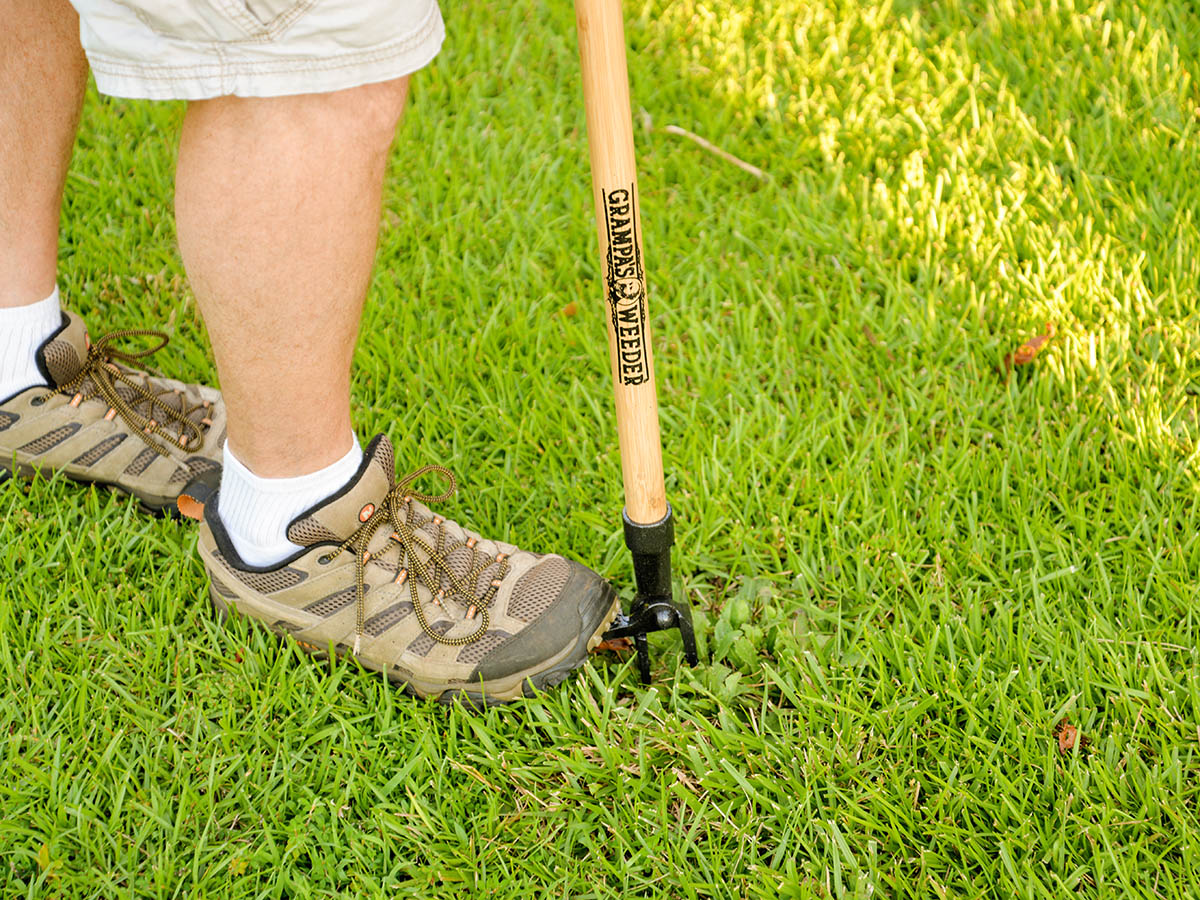
Product Comparison
| Type | Handle Length | Head Size | |
| CobraHead Original Weeder & Cultivator Garden Tool | Digging, cutting, raking | 8 inches | 5 inches long by 1 inch wide |
| Radius Garden Ergonomic Weeder | Digging | 5.75 inches | 9 inches long by 1.5 inches wide |
| Nisaku NJP801 Yamagatana Stainless Steel Knife | Digging, cutting | 5.5 inches | 7.5 inches long by 1.75 inches wide |
| Grampa’s Weeder | Digging, pulling | 39 inches | 1 inch wide by 2.5 inches deep, with a 5.5-inch step lever |
| Corona Extended Reach ComfortGel 2-Prong Weeder | Digging, pulling | 34 inches | 3 inches long by 0.5 inch wide |
| Elegital Blue Arrow Express Kana Hoe 217 Garden Tool | Digging, chopping, slicing | 5 inches | 5 inches long by 1.25 inches wide |
| Truper Tru Tough Welded Warren Hoe | Digging, chopping | 54 inches | 6 inches long by 4.75 inches wide |
Our Top Picks
With our shopping considerations in mind, which we look at later in greater detail, we created a list of the best weeding tools for typical lawn, garden, and landscape projects. Read on to learn more about these tools and how they performed in our tests.
Best Overall
CobraHead Original Weeder & Cultivator Garden Tool
Product Specs
- Type: Digging, cutting, raking
- Handle length: 8 inches
- Head size: 5 inches long by 1 inch wide
This Bob Vila Approved product carries our brand’s highest level of recommendation.

Bob Vila Approved recognizes the household and DIY products that impressed us most in our real-world testing and that exemplify core values of the Bob Vila brand, including craftsmanship, innovation, and value for the dollar. Winners of this designation come recommended by our professional review team and are personally approved by Bob Vila.
What We Like
- Multiuse tool works great for both for weeding and planting
- Tempered steel head is durable and easily lasts several seasons
- Thick, comfortable handle; ideal for long hours in the garden
- Works in any soil type; provides excellent versatility
What We Don’t Like
- Only for up-close work; may require lots of bending and kneeling
- Cuts deep taproots instead of pulling them
Great for removing stubborn weeds from heavy soil, this weeding tool’s curved, forged-steel end hooks deeply beneath the weed to lift and remove it. It’s made to easily pierce soil and let the user apply pressure from the side, bottom, or any angle in between to find the weed’s weakest point.
The multifunction tool’s shovellike tip resembles a snake head and can be used for planting rows of seeds, scratching in fertilizer around plants, and scraping out young weed seedlings. The plastic grip is designed to help gardeners keep a firm hold while they work.
In testing, the CobraHead’s versatility truly impressed us. The curved shaft and fingernail-like shape of the blade dug deep into the soil for removal of taproot, yet it just scratched the surface to cultivate safely next to young seedlings. In addition to our in-ground and container garden weeding tests, we used the CobraHead to prepare planting spots for new seedlings. The tough blade quickly loosened the surface to a depth of about 4 inches with little effort.
The thick handle provided a sure, comfortable grip in either hand. The drawback of this tool’s design is that it easily cuts off the deepest taproots, leaving the stump behind to resprout. But for young weeds of all types, cultivating near sensitive plants, and occasional soil preparation work, this is a handy little tool. We can highly recommend the CobraHead’s unique shape and lightweight design to tackle weeding and many other garden-related tasks.
Get the CobraHead weeding tool at Amazon, Gardener’s Edge, or Grow Organic.
Best Bang for the Buck
Radius Garden Ergonomic Weeder
Product Specs
- Type: Digging
- Handle length: 5.75 inches
- Head size: 9 inches long by 1.5 inches wide
What We Like
- Digs deeply to remove the whole tap root
- Comfortable ergonomic handle helps reduce fatigue after prolonged use
- Strong die-cast aluminum blade will not bend
What We Don’t Like
- Requires bending or kneeling; not a long tool
- Thick blade is more difficult to use in heavy soil
Gardeners need a strong grip to weed in dense soil, but as hands tire, grip strength suffers. The curved handle on the Radius Garden weeding tool is designed to keep the user’s hand and wrist aligned while pushing the serrated aluminum tool next to the root to lift out the weed. This impressive tool helps remove deeply rooted weeds that grow at the base of vegetables, shrubs, and perennials—and it’s a bargain, to boot.
The narrow blade easily cuts through any type of soil to remove pesky weeds and help to navigate around nearby plants without damaging their roots. The unusual shape of the thermoplastic grip provides a smooth, comfortable surface that’s easy to hang on to.
Another versatile weeder that doubles as a transplanter, this Radius hand tool proved impressive for the price. It was very effective at removing established taproot weeds, with the narrow blade easily reaching 5 to 6 inches deep to loosen the soil for thorough removal without breaking the root. For shallow, fibrous weeds, we slid the blade just below the soil surface at a shallow angle, a slow process, but ultimately successful.
As a transplanter for seedlings, however, it worked quite well. It was lightweight and easy to use, and the oversize ergonomic cushioned grip left us with virtually no hand fatigue after extended use. Those who need a taproot weeding tool for working in confined spaces will find this one quite helpful, and it’s likely to come in handy for other chores as well.
Get the Radius Garden weeding tool at Amazon.
Best Knife Weeder
Nisaku NJP801 Yamagatana Stainless Steel Knife
Product Specs
- Type: Digging, cutting
- Handle length: 5.5 inches
- Head size: 7.5 inches long by 1.75 inches wide
What We Like
- Mid-tang stainless steel blade is very sharp and durable
- Sharp edge and measured blade markings helps with precision
- Comfortable nonslip grip feels good in the hand
- Hard plastic sheath included to protect the blade when not in use
What We Don’t Like
- Premium price point compared to similar products
- Sheath not as durable as the knife; may need replacing every few seasons
Though several popular configurations of weeding knives exist, we prefer the classic Japanese hori hori knife design. This weeding tool by Nisaku combines classic style with modern materials that will probably last a lifetime. The stainless steel blade features one smooth sharpened edge and one serrated edge to cut easily through weed roots, divide clumps of perennials, and cut garden twine. The concave face of the blade is ideal for removing taproots, and engraved measurement markings help to gauge transplant planting depth.
The ergonomic contoured handle includes a textured surface for improved grip and a wide molded hilt loop for hanging on a hook in the garden shed. The knife comes with a plastic sheath for safe carrying and storage.
In testing, the do-it-all Nisaku hori hori garden knife proved comfortably constructed, well-balanced, and easy to use for large and small hands. It did a great job of taproot removal and skimming the soil beneath fibrous rooted weeds, though it was less successful when it came to prying weeds from narrow cracks between bricks and pavers. We also used it to dig, divide, and transplant a few hostas that had finished blooming, and it made quick work of the tough fibrous roots.
The blade’s material construction looks, feels, and is in fact extremely high quality: high carbon 440C stainless steel hardened to HRC 58—similar in material and hardness as professional kitchen knives and top-notch pocket knives. Even after digging around in the dirt, the edges were still sharp enough to slice easily through ¼-inch-thick forsythia branches. Though we found the plastic scabbard to feel rather cheap, we believe that serious gardeners will want to keep this tool close at hand for all sorts of chores.
Get the Nisaku weeding tool at Amazon or The Home Depot.
Best Standing Weeder
Grampa’s Weeder
Product Specs
- Type: Digging, pulling
- Handle length: 39 inches
- Head size: 1 inch wide by 2.5 inches deep, with a 5.5-inch step lever
What We Like
- Can easily pull taproot lawn and garden weeds
- Made from durable hardwood handle and steel head
- Works from a standing position; better for reducing back pain
What We Don’t Like
- Specialty single-task tool not as versatile as other weeders
- Weeds can clog the tool head; can require manual removal
Before the days of spray-on weed killers, obtaining a weed-free lawn meant pulling the pesky unwanted plants by hand. Grampa’s Weeder was probably hailed as a miracle back saver when it was introduced in 1913. Now the classic design represents an efficient alternative to chemical controls. Plus, it can be rather fun to use.
The simple, ingenious design features a steel step-on lever connected to a hinged jaw. Step down to insert the tool into the soil, then lever back on the handle to pull out the weed, root and all. Results are immediate, with no ugly dead weeds left in the lawn.
During tests, we found Grampa’s Weeder was most effective for use on dandelions and other fleshy rooted and rosette-forming weeds such as wild violet and wild lettuce. We had the greatest success when our clay-based soil was moist but not muddy. When the soil was too wet, the tool lost gripping ability, and when the soil was dry, the weed roots were more likely to break off. But in the most favorable conditions, we pulled 10 to 12 weeds per minute (5 to 6 seconds per weed).
Working just a few minutes a day, long enough to fill a bucket with weeds, we completely eradicated weeds from 5,000 square feet of lawn in 3 days. Grampa’s Weeder worked just as well in landscape and flower beds. For those who deal with regular invasions of taproot and fleshy root weeds, this could be a helpful weapon to fight the good fight.
Get the Grampa’s Weeder weeding tool at Amazon, Ace Hardware, or Garrett Wade.
Best Fork Weeder
Corona Extended Reach ComfortGel 2-Prong Weeder
Product Specs
- Type: Digging, pulling
- Handle length: 34 inches
- Head size: 3 inches long by 0.5 inch wide
What We Like
- Cushioned nonslip grip is easier to handle for long periods
- Capable of pulling out tough taproot weeds
- Works from a standing position to save users’ backs
- Also useful as a trash gatherer; multi purpose tool
What We Don’t Like
- Taller or shorter users may find it less comfortable
- Sharp head sometimes cuts off some of the root
Two-prong weeders are taproot specialists, and this one from Corona is one of the best. This weeding tool is made of steel with a sharpened heat-treated fork-tipped blade. It features a long handle that turns weeding into stand-up work, saving the user’s back and knees, while a trapezoidal-shaped cushioned-grip handle reduces hand fatigue.
We used this Corona tool to pull weeds from lawn, landscape, and garden beds. Although it is made of steel, it felt lightweight to carry around, and we appreciated the simplicity of the design—a complete lack of moving parts. It proved easy to operate one-handed: Slide the head into the ground next to the weed, then pull the lever backward to excavate the weed. It worked best on medium to large weeds (smaller weeds often slipped between the forks) when soil was damp. Mud, unfortunately, prevented the lever action from working properly, while hard dry soil led to root breaks and only partial removal. This weed puller was especially useful for woody weeds such as young oak, sweet gum, and elm seedlings. Despite soil condition issues, the tool proved to be an easy-to-use, easy-to-store asset for patrolling the yard.
Get the Corona weeding tool at Ace Hardware, Lowe’s, or Acme Tools.
Best Short-Handle Hoe
Elegital Blue Arrow Express Kana Hoe 217 Garden Tool
Product Specs
- Type: Digging, chopping, slicing
- Handle length: 5 inches
- Head size: 5 inches long by 1.25 inches wide
What We Like
- Sharp blade easily slices through roots; great for dealing with lots of weeds
- High-carbon-steel blade and hardwood handle
- Blade easy to sharpen and stays sharp a long time
- Blade is angled for user comfort and efficient work
What We Don’t Like
- Not designed for left-handed use
- Overall tool length feels a bit too short
A kana hoe, which works on the pull stroke, is used for scraping and slicing cleanly through shallow roots in the upper layers of soil. This one from Elegital is built for up-close work in raised beds, container gardens, and in-ground gardens. The broadly curved blade is attached to the handle at a comfortable angle to reduce hand and wrist fatigue while working aggressively. It features a hardwood handle and a high-carbon-steel head that stays sharp longer and resharpens more easily than other types of steel.
The size of this tool was just right for scratching out 2 or 3 square feet of weeds at a time. The sharp blade sliced right through, whether the weeds were young or well established. In established garden areas, three or four strokes were adequate to cut through weed roots and break up the resulting debris. It works the soil to a depth of up to 4 or 6 inches, so it’s useful for preparing planting holes as well. However, where thick tree roots or large rocks were present, it became much less effective.
This kana hoe would be a great choice for general weeding and replanting in raised beds or well-established in-ground gardens but probably not for landscape beds. Note: The blade orientation is for right-handed users. Lefties may want to check out this one from Bonsai.
Get the Elegital weeding tool at Amazon.
Best Long-Handle Hoe
Truper Tru Tough Welded Warren Hoe
Product Specs
- Type: Digging, chopping
- Handle length: 54 inches
- Head size: 6 inches long by 4.75 inches wide
What We Like
- Welded steel head and hardwood handle is durable and long lasting
- Lightweight and easy to use; works large soil areas quickly
- Also useful for planting and cultivating
What We Don’t Like
- Not built for use in untilled soil
This garden hoe is designed to be effective at eliminating different kinds of weeds in different garden spaces, and help with planting too. With an overall length of 54 inches, the Truper Tru weeding tool is a back-saving weed slayer. It offers plenty of reach to work through raised beds efficiently and in-ground gardens without unnecessary bending and stooping. It features a 54-inch hardwood handle and welded steel head.
We liked that we could easily use any edge of this hoe to eradicate weeds in different ways. Between rows of garden vegetables, we mostly used the long, slightly curved sides of the blade to scrape the weeds away, switching to the right or left side as needed to avoid damaging garden plants. Between plants spaced at least 4 or 5 inches apart, we employed the pointed end to scratch out weeds. In addition to weeding, we used this hoe to pull soil into mounds (“hills”) to plant squash and to create long, narrow furrows for planting beans.
The hardwood handle was lightweight and strong, and it felt good in hand, but it is no doubt susceptible to degradation if left exposed to the elements. Plus, we found that the tool was not particularly effective at working in heavy clay soil that had not been previously tilled. Still, this Warren hoe would make an excellent primary weeding tool for any vegetable gardener, and its versatility will suit those just beginning to establish a garden tool collection or with limited storage space.
Get the Truper weeding tool at Amazon, DK Hardware, or North 40 Outfitters.
Jump to Our Top Picks
How We Tested the Best Weeding Tools
Those looking for nontoxic ways to eliminate weeds from lawns and gardens typically begin by simply pulling them by hand. Soon enough they realize that specialized tools are better for controlling the toughest weeds. The locations where those tools will be used and the types of weeds that are present play dominant roles in deciding which weeding tools are best suited for the job. Our tests, therefore, included a variety of tools designed for specific tasks.
We carried out our weeding tool tests in two trial areas: a lawn and a vegetable garden. Both areas included a variety of common weeds with different growth habits, such as dandelions, wild violet, crabgrass, and spurge. We used each tool for a minimum of an hour to weed in one or both of these areas, depending on the tool design. For instance, we used the Warren hoe only in the garden, but we tested the Radius weeding tool in both areas.
For inclusion in this guide, we required that a tool offer excellent results in one or more critical weeding tasks: general weed control in raised or in-ground garden beds, general weed control in container gardens or confined spaces, or removing taproot and rosette weeds from lawns. Because of the diversity of designs tested, we evaluated each tool based on its ability to perform its own designed purpose instead of comparing dissimilar tools.

What to Consider When Choosing the Best Weeding Tool
With a wide array of weeding tools from which to choose, it may be difficult to decide on the best ones to maintain garden beds and lawns. However, shoppers may appreciate the variety when they understand the features each tool offers, from pulling weeds to cutting through compacted soil. Take some time to learn about these implements and the factors that set them apart to find the best tool for weeding any yard.
Types of Weeding Tools
The method of weed removal, such as digging, chopping, cutting, slicing, or raking, distinguishes the several types of weeding tools from one another.
Digging and Chopping
Taproot weeds such as dandelions require a digging tool that penetrates soil deeply enough to dislodge the entire root. Traditional fork-tongue fishtail weeders work well. Snakehead and spearpoint tips also rise to the task. Grub hoes, the toughest of these tools, may make the best match for large weeds in heavy soil.
Short-handled chopping hoes help remove large weeds in areas that require more precision, such as around the base of perennials and shrubs. Steel diggers, perhaps the best digging tools for hard clay soil, won’t bend or break in denser soils.
Cutting and Slicing
Although not always useful on deeply rooted weeds, cutting tools such as knives and sickles work well on roots that are more fibrous, such as those of crabgrass and creeping Charlie, which sit close to the soil surface.
Knives cut away entire pieces of weed-infested turf and scrape out weeds from sidewalk cracks and pavers. Slicers, such as stirrup-style hoes, skim the surface of the soil with a push/pull motion. They quickly remove smaller weeds or those in cultivated beds.
Raking
Ideal for loose, easy-to-work soil in cultivated flower and vegetable gardens, raking weeders, like stirrup hoes, forks, and hybrid cultivators, combine digging and raking tools on a single head to lift clusters of shallow-rooted weeds.
These tools work with a push/pull action, skimming the soil surface and dislodging smaller weeds that gardeners can gather and discard or leave in place to decompose and feed the soil. Consider a long-handled raking weeder for removing weeds around shrubs and a short version for raised beds and tight spaces.
Size and Weight
The size and components of a weeding tool have the most impact on its weight. Hand tools may weigh less than a pound and usually no more than 5 or 6 pounds. Lighter manual full-length tools such as hoes and forks usually weigh between 5 and 10 pounds.
A heavy tool can be tiring to wield when weeding for a long period, so try to strike a balance between durability and weight (not to mention cost). Aluminum and plastic garden tools are lighter and less expensive, but they most likely won’t last very long. Steel and fiberglass are pricier and last longer. Wooden tools weigh more and cost less.
Those working on a small flower bed with minimal growing areas may find a smaller, lighter tool sufficient. Smaller tools allow for more flexibility and precision in tighter spaces. More extensive gardens require heavier, sturdier tools that provide more leverage for digging and breaking up soil.
Blade and Handle Material
Stainless steel, aluminum, plastic, wood, and fiberglass figure prominently into the handles and blades of weeding tools.
- Steel lasts a long time and gets the job done, but it’s not lightweight. A steel shaft or handle weighs more than aluminum, plastic, and fiberglass. And only stainless steel or powder-coated steel resists rust.
- Aluminum weighs less than steel and resists rust. On the other hand, this less expensive material bends and dents more easily than steel. Aluminum may not stand up well to hard, rocky soil.
- Plastic handles weigh less and cost less, but the lightweight, inexpensive material can break or crack with heavy or extended use—so they’re hardly a bargain in the long run.
- Wood handles and shafts provide a cost-effective, durable, and moderate weight option. But wood can break, crack, and rot in certain weather conditions.
- Fiberglass provides a strong and lightweight handle at a slightly higher price. This material stands strong against rust and extreme weather.
Handle Length
For the right handle length, consider both the work area and the user’s own physical limitations. Large garden beds and walkways are best weeded from an upright position that takes the stress off the back, helping gardeners do the greatest amount of work with the least amount of effort. If bad knees or hips make it difficult to kneel comfortably, choose a longer handle.
Some weeders include a feature that lets users pull the weed and discard it without having to bend over. Raised beds and tight spaces are conducive to short-handled weeders that let gardeners—especially those with healthy joints—get up close. Some weeding tools include an ergonomic grip that keeps the hand and wrist at the same angle, eliminating strain on joints caused by prolonged repetitive use.
Grip
Rubber coating on grips and handles can help alleviate wear and tear on hands. Shoppers will want to keep in mind that regardless of the ergonomic or fatigue-relieving features any handle or grip might offer, it’s still a good idea to wear a quality pair of gardening gloves to avoid scratches and cuts from branches, stones, and thorns.
Plastic handles designed in ergonomic shapes that offer a comfortable grip work fine for smaller tools. However, they often can’t handle the leveraging pressure that larger tools can, and they will snap easily.
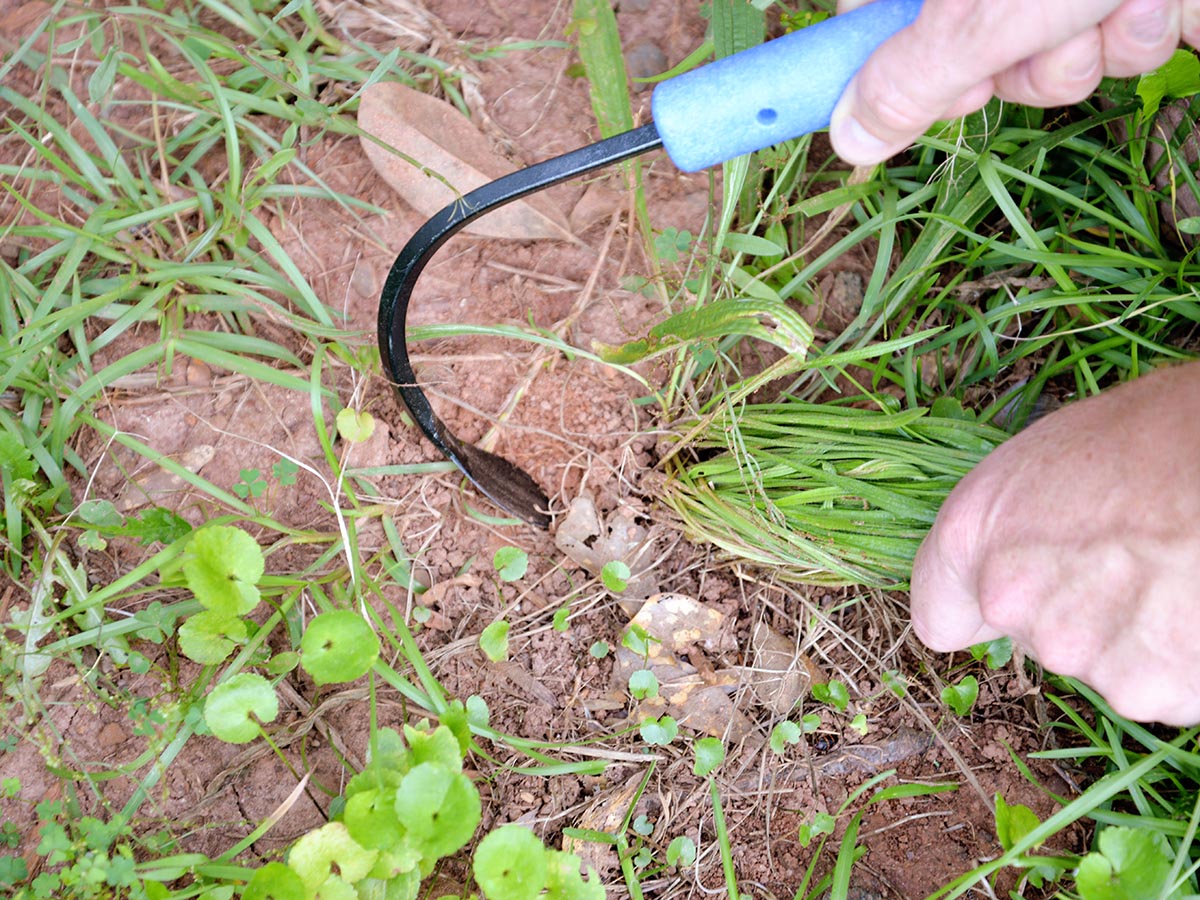
FAQs
Many different tools can aid in removing weeds. As noted in this guide, weeding tools typically fall into three categories: digging and chopping tools, cutting and slicing tools, and raking tools. Within these categories, there are a variety of options, including fork weeders, snakehead weeders, spearpoint-tip weeders, grub hoes, knife weeders, sickles, and stirrup hoes.
It’s important to move carefully around flowers, shrubs, and other plants to avoid damaging their roots. With this in mind, the Elegital weeding tool is a good choice for maintaining control while removing weeds from around plants.
Pullers tend to be the best dandelion weeder tools. One of the best tools for removing dandelions is Grampa’s Weeder.
The best hand weeder can vary depending on the user and the task at hand, but the CobraHead weeding tool and the Radius Garden weeding tool are among the best hand weeders available.
